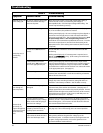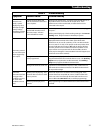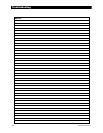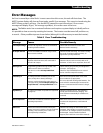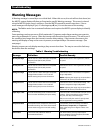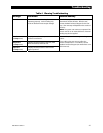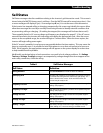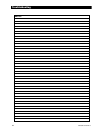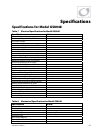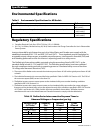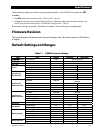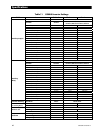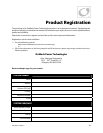
Troubleshooting
42 900-0020-01-00 Rev A
Disconnect Messages
Disconnect messages explain the reason that the inverter rejected an AC source. The unit returns to
inverting mode if turned on.
This screen is viewed using the
AC INPUT
hot key on the MATE3. (See
the MATE3 manual for more instructions.) One or more messages will display
Y
(yes). If a message
says
N
(no), it is not the cause of the disconnect. The MATE3 system display may generate a
concurrent Event and Warning message following the disconnect. (See previous page.) If the AC
source is removed, the Warning will be blank, but the cause of the last disconnect will remain.
Disconnect messages only display the reason for the disconnection; they cannot correct it. It is usually
the result of external conditions, not an inverter fault. If the condition is corrected, the inverter will
reconnect. A few settings can be changed to accommodate problems with the AC source.
The reasons shown in the Sell Status menu for ceasing to sell power (see next page) are not the same
as disconnect messages, although they may be caused by the same circumstance. A grid-interactive
unit can stop selling and still remain connected to the utility grid.
Table 5 Disconnect Troubleshooting
Message Definition Possible Remedy
Frequency Too High
The AC source has exceeded
66 Hz.
Check AC source. If it is a generator, reduce speed.
Frequency Too Low
The AC source has dropped below
54 Hz.
Check AC source. If it is a generator, increase speed.
Voltage > Maximum
The AC source has exceeded
140 Vac (default value) on either
L1 or L2.
Check AC source. The inverter’s acceptance range
is adjustable.
NOTE:
Adjusting the range may accommodate a
problematic AC source, but it will not fix it.
Voltage < Minimum
The AC source has dropped below
108 Vac (default value) on either
L1 or L2.
Check AC source. The inverter’s acceptance range
is adjustable.
NOTE:
Adjusting the range may accommodate a
problematic AC source, but it will not fix it.
Backfeed
Usually indicates another AC
power source (out of phase with
the inverter) was connected to the
unit’s AC output.
Can also occur if an out-of-phase
AC source is connected to the
inverter’s AC input.
Disconnect the AC OUT wires. Check the wires
(not the inverter) with an AC voltmeter. If an AC
source is present, shut it off. (This is more often
accompanied by an
AC Output Backfeed
error.)
Check input source and wiring. This can be caused
by a source with phase problems. It can also be
caused by transferring from one AC source to
another before the inverter can synchronize itself.
Phase Lock
The unit cannot remain in phase
with an erratic AC source.
NOTE:
This is not an “Error” as
defined on page 39 and is not
accompanied by a shutdown.
Check AC source. This can be caused by a
generator with a poorly regulated output. Some
generators behave this way when running out of
fuel. If necessary, set the Radian inverter to the
Generator
input mode. (See page 9.)
Island Detect
The unit detects something other
than normal grid conditions. This
is usually the result of an open AC
input circuit.
Check all input circuit breakers for an open circuit.
This may (rarely) happen with a generator. If
necessary, set the inverter to the
Generator
input
mode. (See page 9.)





